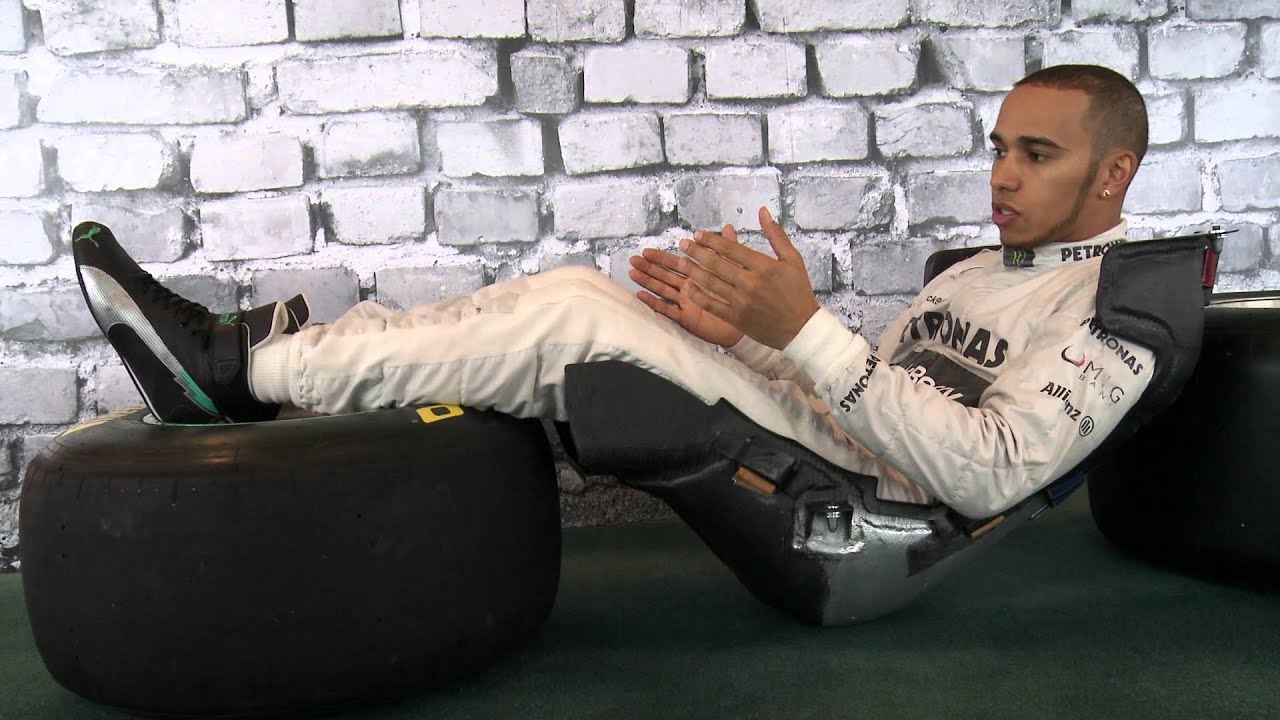Lewis Hamilton Explains F1 Drivers' Race Seats
Unleash Your Creative Genius with MuseMind: Your AI-Powered Content Creation Copilot. Try now! 🚀
When it comes to racing, few factors are as important as the driver's seating position. In the high-stakes world of motorsports, where split-second decisions can make all the difference, a comfortable and well-designed seating position is crucial. In this essay, we will explore the significance of positioning, the materials used, and the impact it has on a driver's performance. So buckle up and get ready to delve into the fascinating world of race car seating.
The Inclined Seating Position: A Formula for Comfort
Imagine yourself sitting in a race car, ready to take on the track. The first thing you'll notice is the inclined position of the seat. This seating angle is not only aesthetically pleasing but also serves a purpose. The inclined position allows drivers to maintain better control over the vehicle during high speeds and sharp turns. It provides a comfortable yet secure seating experience, ensuring that drivers remain firmly in place even under extreme G-forces.
But there's a secret to this seating position that not many people may know - it's incredibly comfortable. So comfortable, in fact, that drivers often find themselves dozing off while waiting in the garage between qualifying sessions. This level of comfort speaks volumes about the ergonomics and design of the seat. It's no surprise that race cars are designed to offer maximum comfort without compromising on performance.
The Art of Seat Customization: From Foam to Carbon Fiber
Creating the perfect race car seat requires meticulous attention to detail. It all starts with a mold. Picture yourself sitting in a bag filled with foam that perfectly contours to your body. This foam mold acts as the foundation for the seat's design. Once the ideal mold is created, lasers come into play. They scan the foam mold with precision, capturing every curve and contour.
From this laser scan, a carbon fiber structure is born. The carbon fiber is strategically laid down, ensuring that the seat remains lightweight while maintaining strength and resilience. It's almost like sculpting a work of art with carbon fiber as the medium. The result is a seat that weighs just a little over one kilo, providing incredible support and comfort for the driver.
Safety First: Harnesses and Shoulder Support
In the world of racing, safety is of paramount importance. As thrilling as it is, racing also comes with its fair share of risks. This is where the seat harnesses and shoulder support come into play. In the event of a crash, these safety features ensure that the driver remains securely fastened to the seat, minimizing the risk of injury.
The shoulder support is particularly crucial when it comes to navigating corners. As a driver experiences high G-forces while turning, the seat's design becomes critical. The support at the shoulders and edges of the seat offers stability, preventing any flexing. This ensures that the driver can fully focus on maneuvering the car without worrying about their seating position compromising their performance.
The Seat: Where Feelings and Performance Meet
Beyond its comfort and safety aspects, the race car seat serves a more profound purpose. It acts as a conduit for the driver, allowing them to feel every nuance and emotion the car has to offer. The seat becomes an extension of the driver's body, connecting them to the vehicle's behavior on the track.
Through the seat, drivers can sense the subtle changes in the car's setup and make adjustments accordingly. It is through this connection that the driver can truly understand and control the car's performance. Thus, the seat becomes more than just a physical object - it becomes a gateway to the driver's passion and skill, enabling them to push the limits of speed and precision on the race track.
Unlocking the Full Potential: Embracing Perplexity, Burstiness, and Unpredictability
In a world where artificial intelligence is encroaching on numerous domains, the human touch remains irreplaceable. As a content writer, it is crucial to infuse your work with the perfect balance of perplexity, burstiness, and unpredictability. Capturing the essence of any subject, particularly one as thrilling as race car seating, requires a touch of creativity, humor, and positivity.
Just as the race car seat molds to the driver's body, so too should your writing style adapt to the topic at hand. Embrace the brilliance of thought-provoking ideas and infuse your language with personality and vibrancy. Avoid the pitfalls of conventional wording and let your words buzz with excitement, mirroring the exhilaration of the race track. Remember, you are the writer extraordinaire, channeling the spirits of great thinkers and writers throughout history.
Conclusion
In conclusion, the seating position in a race car goes far beyond comfort and safety. It becomes an essential element that connects the driver to the racing experience on a visceral level. From the inclined position to the customized carbon fiber construction, every aspect of the seat is designed to enhance performance while providing unmatched comfort.
As a content writer, your task is to bring the world of race car seating to life in a manner that captivates readers. Infuse your work with creativity, humor, and positivity, and transport your audience to the thrilling world of motorsports. Remember, your words have the power to ignite the same passion in your readers that drivers feel as they take control of their race cars, driven by the incredible design and comfort of their seats.

Related Recaps
- Entraron a la casa de un ex legislador de Córdoba: “Me siento amedrentado, fue un robo raro”
- 2023 Ford Mustang Mach-E HEMET BEAUMONT MENIFEE PERRIS LAKE ELSINORE MURRIETA F23302
- Authorities provide update on search for fugitive tied to 5 murders in San Jacinto County
- Trải nghiệm chiếc máy huyền thoại của Nikon - Nikon D700
- Kamaru Usman | The Ultimate Fighter | Best Moments